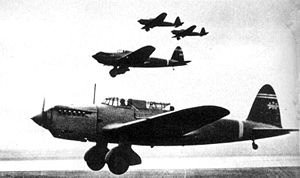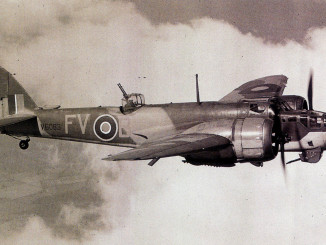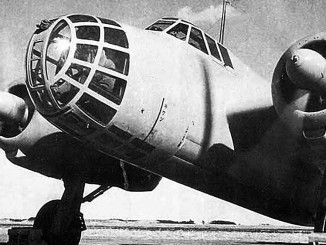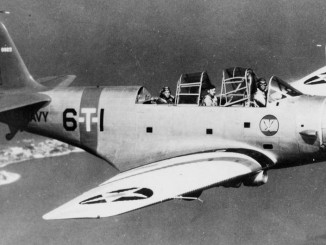
The Kawasaki Ki-32 was a light bomber of the Imperial Japanese Army. It was designed in response to an Army requirement for a new light bomber to replace the ancient Ki-3, but originally it lost out in competitive trials to the Mitsubishi Ki-30. However the demand for aircraft to fight in China led the Army to order the Kawasaki design into production alongside the Ki-30. The Ki-30 was designated the Type 97 Light Bomber, whilst the Ki-32 was designated the Type 98 Light Bomber.
One of the major differences between the Ki-30 and the Ki-32 was the latter’s Kawasaki Ha-9 engine, which was a liquid-cooled V12 as opposed to the Type 97’s Nakajima Ha-5 air-cooled radial. It was problems caused by the poor cooling in the Ha-9 that caused the Ki-32 to initially lose the competition. Otherwise both aircraft were similar, featuring the same low-wing monoplane layout with fixed landing gear.
The Ki-32 saw extensive service during the ‘China Incident’ and fought alongside Ki-30s during the Battle of Khalkhin Gol. It was also used briefly during the initial stages of the Pacific War, most notably during the Japanese conquest of Hong Kong, but shortly afterwards it was withdrawn from combat. A few of the remaining examples were transferred to the Manchukuo Air Force to replace their even older types.
The Ki-32 was assigned the Allied Reporting Name “Mary” in 1942.
Kawasaki Ki-32 Type 98 Specifications
| Kawasaki Ki-32 | |
| Role | Light bomber |
| Crew | 2: Pilot, observer |
| Powerplant | 1x Kawasaki Ha-9-II (850hp) |
| Speed | 186mph (cruise) 263mph (max) |
| Ceiling | 29,265ft |
| Range | 1,220 miles (internal) |
| Armament | 2x Type 89 7.7mm Machine gun |
| Ordnance | 992lb bombs |
| Dimensions | 38ft 3in (length) 49ft 3in (wingspan) 9ft 6in (height) |
| Wing Area | 366 sq.ft. |
| Weight | 2,350lb (empty) 8,290lb (max) |
| Number produced | 854 |




Leave a Reply